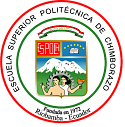Agricultural Product Classifier for Quality Control based on Machine Learning and Industry 4.0
DOI:
https://doi.org/10.47187/perspectivas.vol2iss2.pp21-28.2020Keywords:
Automation, Artificial Intelligence, KNN, MQTT, Agricultural Technology, CNNAbstract
Currently, empirical techniques in Ecuadorian agricultural production are not enough to achieve quality changes with food safety standards and thus meet the demand of an international market. This work presents a system capable of supervising, classifying, and controlling the quality of products in the agricultural sector, by applying soft computing techniques and machine learning algorithms that affect the identification of images in real time. The research will implement classification algorithms of nearest K neighbors to label the products according to their quality and send the reports in real time to a web application using the MQTT protocol. The employed products in this study were bananas, oranges, green bananas, and apples. The obtained results allow to determine the minimum number of images required for training the identification models and the identification error rates during the validation stage.
Métricas
References
«Poca tecnificación reduce competencia en el agro - NOV. 09, 2004 - Economía - Historicos - EL UNIVERSO», nov. 09, 2004.
«Información Agroambiental y Tecnificación Agropecuaria |», 2018. https://www.ecuadorencifras.gob.ec/informacion-agroambiental/ (accedido may 28, 2020).
M. T. T. Livio, «LAS TAXONOMÍAS SOBRE LOS AGENTES ECONÓMICOS EN EL AGRO ECUATORIANO 1965-2015. CONTEXTO, SUPUESTOS TEÓRICOS, APORTES Y LÍMITES.», UCE, Quito, Ecuador, 2018.
«La tecnificación es una de las alternativas a la crisis arrocera», El Comercio.
S. Sherwood y M. Paredes, «El futuro como producto del presente: caso de estudio sobre la modernización agrícola en Carchi, Ecuador.» Grupo FARO, 2013, Accedido: may 28, 2020. [En línea]. Disponible en: https://n9.cl/g8g9.
H. Jácome Estrella y K. King, Eds., Estudios industriales de la micro, pequeña y mediana empresa, 1. ed. Quito, Ecuador: FLACSO Ecuador, 2013.
«Artificial Intelligence and Environmental Decision Support Systems», p. 15.
S. Russell, P. Norvig, J. M. Corchado Rodríguez, y L. Joyanes Aguilar, Inteligencia artificial: un enfoque moderno. Madrid: Pearson Educación, 2011.
M. Wooldridge y N. R. Jennings, «Intelligent agents: theory and practice», Knowl. Eng. Rev., vol. 10, n.o 2, pp. 115-152, jun. 1995, doi: 10.1017/S0269888900008122.
S. Franklin y A. Graesser, «Is It an agent, or just a program?: A taxonomy for autonomous agents», en Intelligent Agents III Agent Theories, Architectures, and Languages, Berlin, Heidelberg, 1997, pp. 21-35.
P. H. Winston, «Artificial intelligence: a perspective», 1990, p. 11, [En línea]. Disponible en: https://www.semanticscholar.org/paper/Artificial-intelligence%3A-a-perspective-Winston/75d03d764d147b751de9fb835fb5935aa08e0013.
I. Dzitac, F. G. Filip, y M.-J. Manolescu, «Fuzzy Logic Is Not Fuzzy: World-renowned Computer Scientist Lotfi A. Zadeh», Int. J. Comput. Commun. Control, vol. 12, n.o 6, p. 748, dic. 2017, doi: 10.15837/ijccc.2017.6.3111.
J. R. Hagerty, «Lotfi Zadeh Tried to Adapt Math and Computers to a World of Ambiguity», Wall Street Journal, sep. 22, 2017.
I. A. Basheer y M. Hajmeer, «Artificial neural networks: fundamentals, computing, design, and application», J. Microbiol. Methods, vol. 43, n.o 1, pp. 3-31, dic. 2000, doi: 10.1016/S0167-7012(00)00201-3.
D. Mehta, X. Zhao, E. A. Bernal, y D. J. Wales, «Loss surface of XOR artificial neural networks», Phys. Rev. E, vol. 97, n.o 5, p. 052307, may 2018, doi: 10.1103/PhysRevE.97.052307.
M. van Gerven y S. Bohte, «Editorial: Artificial Neural Networks as Models of Neural Information Processing», Front. Comput. Neurosci., vol. 11, 2017, doi: 10.3389/fncom.2017.00114.
R. F. López y J. M. F. Fernández, Las Redes Neuronales Artificiales. Netbiblo, 2008.
C. G. Cambronero y I. G. Moreno, «ALGORITMOS DE APRENDIZAJE: KNN & KMEANS», p. 8.
H. Lasi, P. Fettke, H.-G. Kemper, T. Feld, y M. Hoffmann, «Industry 4.0», Bus. Inf. Syst. Eng., vol. 6, n.o 4, pp. 239-242, ago. 2014, doi: 10.1007/s12599-014-0334-4.
A. Stanford-Clark y H. L. Truong, «MQTT For Sensor Networks (MQTT-SN) Protocol Specification», p. 28, 1999.
«Keras | TensorFlow Core», TensorFlow, 2019. https://www.tensorflow.org/guide/keras?hl=es (accedido may 17, 2020).
Published
How to Cite
Issue
Section
License
Copyright (c) 2020 Carlos Andrés Guaillazaca González, Valeria Hernandez A.

This work is licensed under a Creative Commons Attribution 4.0 International License.
Copyright
The authors of the manuscripts will retain their copyright on their articles published in Pespectivas Journal. These rights allow the authors to present their manuscripts in public, prepare derivative works, reproduce them physically by printing and distribute them on their social or research networks. These rights will remain unchanged as long as the authors respect the publication and free access policy of Perspectivas Journal.
Publication Rights
Perspectivas Journal reserves all first publication rights on each of the articles that the authors have sent to its review and publication process. It implies that authors will only exercise their copyright if they state the source and origin of the publication correctly, mainly when they distribute, share, present, or use their articles' total or partial content.














